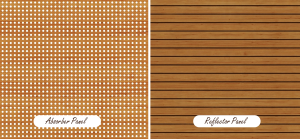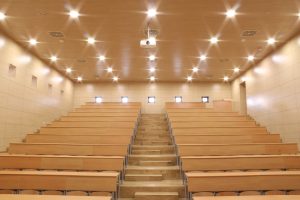In order to make a soundproof room, professional work can be obtained by using low-cost materials, as well as professional companies. Since the soundproof room creates a very isolated area compared to the external environments, it can be used to obtain areas such as studio or cinema room.
Easy and Almost Free Methods
In order to easily make a soundproof room, materials that are at home can be used almost without spending money. The following methods can be followed for this:
- Using Acoustic Curtains and Thick Blankets: Mounting thick blankets on the wall without leaving any gaps is one of the effective methods to contain sound. The more costly form of this practice can be done by purchasing acoustic curtains. Acoustic curtains with soundproofing feature provide a higher level of protection. The method applied is more effective when there is insulation on the wall.
- Library Usage: One of the effective sound insulation methods, the use of a library is one of the methods that prevent sounds from spreading. The bookcase placed along the wall and the books that are placed without any space inside provide the absorption of sound waves.
- Stabilizing Moving Objects: Swinging objects allow the sound to be transmitted more clearly and quickly as they emit vibration. In particular, fixing sound sources such as speakers prevents the sound from causing humming.
- Using Door Skirting: Basically, based on the logic of closing every area where the sound can pass, the door skirting provides both heat and sound insulation.
- Acoustic Sponge Panel Usage: Acoustic sponge panels with a depth of 5 cm are one of the cheapest and easiest methods used for sound insulation. Ready-made panels can be mounted using specially developed liquid-based adhesives. Self-adhesive panels are glued using the tape on the back.
Insulated Floor and Ceiling Construction
Insulated floor and wall is one of the steps to be taken to obtain a soundproof room. Covering the walls using only insulation materials does not prevent sound losses from the floor and ceiling. In soundproof room construction, soundproof mats that completely cover the floor can be used. Using additional drywall and insulation paste to insulate heavy concrete ceilings does not provide high performance. Instead of this practice, it is more effective to install a drywall layer with an air gap on the ceiling.
Filling Joints
Filling small gaps such as joints has an effect on the completely silent structure of the room. The gaps that appear to be small also cause sound transmission. The joints and small gaps in the rooms can be filled using plastic and waterproof silicone materials.
For this process, choosing silicones that are easier to clean provides a more practical use. In order for the silicone to match the color of the wall and decoration, the selection of paintable silicone materials provides a more harmonious appearance. Since the use of normal silicones is easier than insulation silicones, it can be preferred by amateur people who have not done this application before.
Using Insulation Materials
Application using insulation materials allows the sound to be stored more effectively. Insulation sponges and panels are preferred in soundproof room designs. However, subsequent insulation applications reduce the width of the area preferred to make a silent room. Sacrificing 14 cm of space for each insulation material means that there will be shrinkage from 4 walls, floor and ceiling. As the material thickness increases, the rate of sound propagation decreases. Larger-bodied insulation materials are preferred in areas where high frequency sounds will be used.







